It’s time for a special kind of retrospective of the year 2018. In the past 12 months, three of my favourite manga series of the past decade ended – titles that, to me, could be called instant classics. In the rush of new manga publications, it can always be a little hard to remember the good stuff that no longer have an on-going status. For this reason, I’m taking a loving look back at these three now finished yet unforgettable works of art: Kamatani Yuhki’s LBGTQ coming-of-age drama Shimanami Tasogare, Andou Yuki’s Machida-kun no Sekai with its one-of-a-kind protagonist, and Stand Up! by clb.org favorite Yamakawa Aiji.
Shimanami Tasogare by Kamatani Yuhki
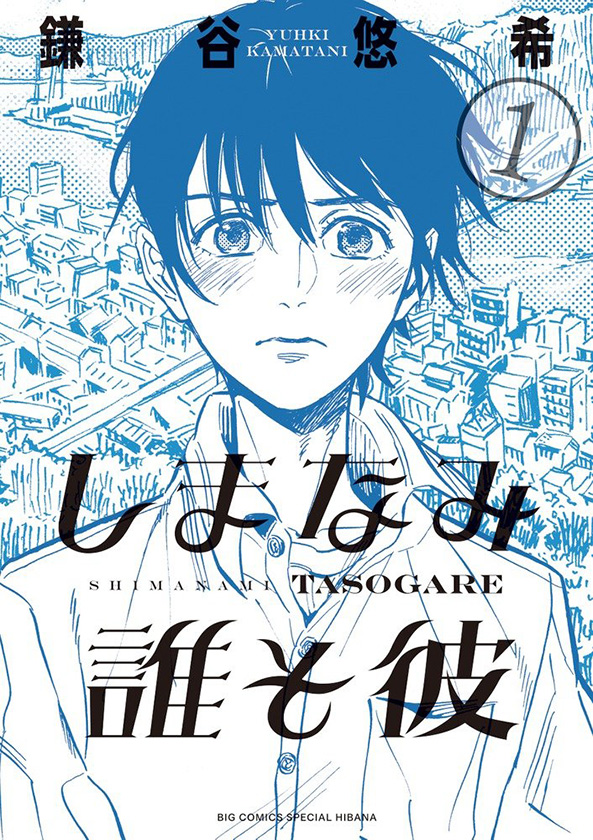
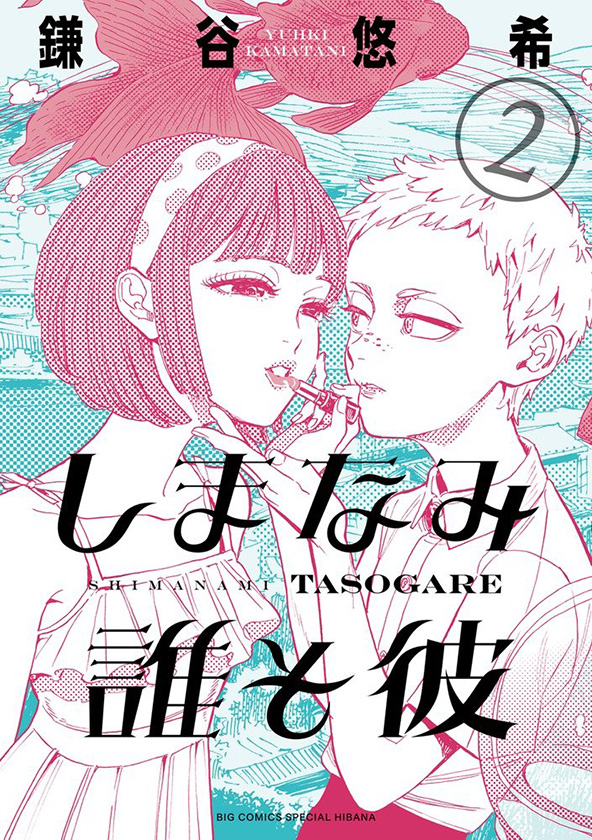
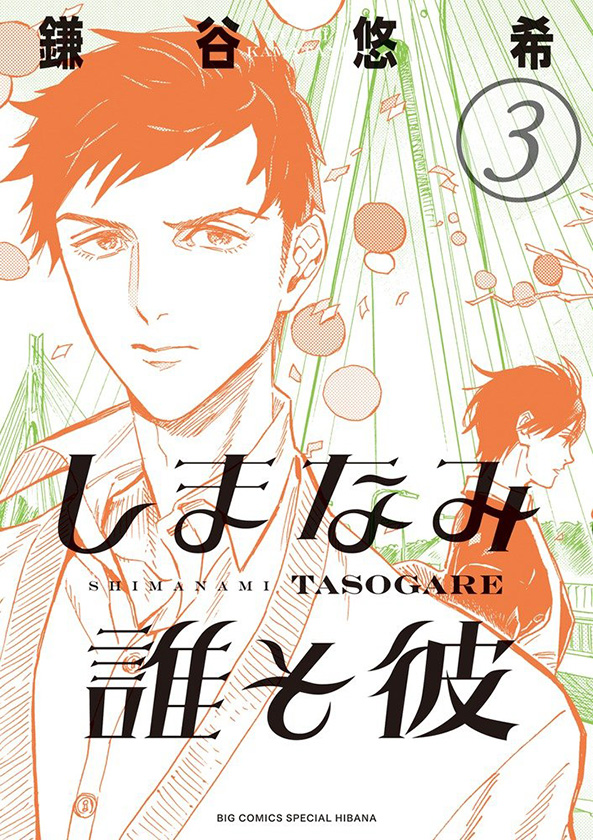
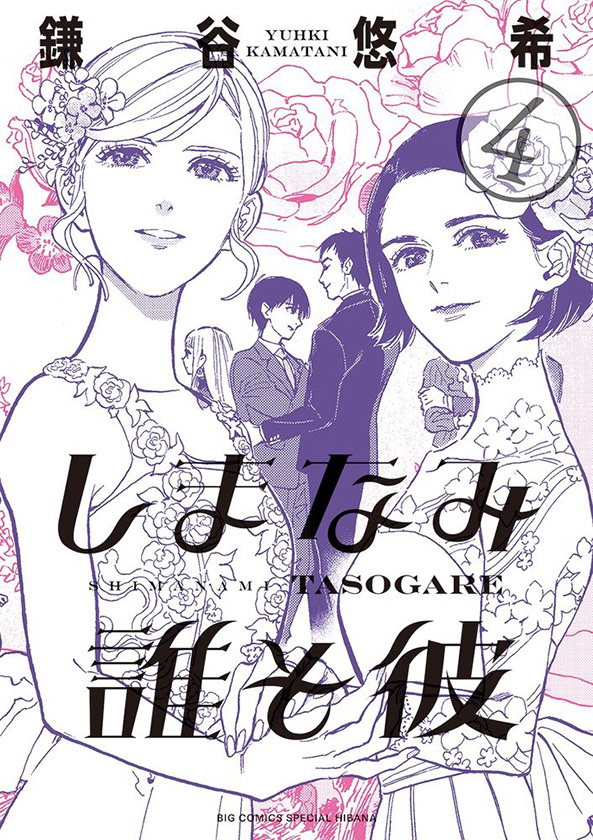
Fiction and art can function as safe spaces in which difficult, even traumatic experiences can be narrated, relived, analyzed, discussed, dissected and brought to the attention of other people. The 4-volume series Shimanami Tasogare was created by X-gender manga artist Kamatani Yuhki for whom the series itself can be seen as such a safe space as it focuses on people who belong to different sexual and gender minorities. And at the same time, the series itself shows how discriminated and oppressed people fight to create such safe spaces for themselves.
The main cast of characters in this extraordinary series are brought together by renovation projects in Onomichi, a city located in Hiroshima prefecture in southern Honshu, facing the Seto Inland Sea (Setouchi) with its smaller islands and Shikoku to the south. In the beginning, teenage boy Tasuku fears he’s been forced to come out as gay by his classmates. The four volumes in part tell his journey of coming to terms with his own sexuality while he meets other intriguing individuals and is invited to join them in their non-profit work. These other volunteers, among them the mysterious and elusive Dareka-san, each identify as sexual and gender minorities (i.e. they are homosexual, asexual, transgender, non-binary, etc.) but are also varied in their personal backgrounds and ages. It is part of Tasuku’s and the reader’s journey through the series to learn that each individual is allowed to take their own time with coming out (or not at all) while they are confronted with society’s prejudices, discrimination and violence against them.
Their safe place is an old but cozy house in the hills of Onomichi which they’ve renovated as part of their volunteer work, offering a space where they can be themselves, relax, listen to music and discuss various matters without having to fear discrimination. This is a place they have created for themselves but it doesn’t stop here. Through their non-profit work of refurbishing traditional but derelict houses and finding new purposes for them, they try to bring renewed life – for everybody! – to an area that’s characterized by an aging population, urbanisation and younger people moving to the big metropolitan centers. Together, they are committed to keep this area they love alive. And thus, next to the memorable and diverse cast, a second lead character emerges through the manga’s beautiful art: the hilly seaside landscape of titular Shimanami itself, the city of Onomichi and its roads and bridges connecting it to the small islands, evoking a gentle nostalgia, a slowing down of events (especially in the hot summers, the seasonal background of most of Shimanami Tasogare), a dreamlike and peripheral idyll.
Despite the dramatic events of the manga, the series ultimately leads to a positive message as it promises hope for a more open, accepting society which protects its minorities and, literally, let’s them claim their own spaces. The moving and mysterious story is carried by its expressive, sometimes even surrealist art which is heavily influenced by shÅjo manga without it having to proclaim to be either this or that, seinen or shÅjo/josei manga – which all points back to the essence of the story itself. The manga was serialized in Hibana (until its demise in 2017), a seinen manga magazine featuring a lot of female artists known for their shÅjo/josei manga publishing gender-free/cross-over works for a mature readership in it. Shimanami Tasogare finally ended with its 4th volume in 2018, a book that brought me tears of pain, anger and joy – in this order. It is now making its way around the world, offering most of all the LGBTQ+ community, but also everyone who feels a little different than the mainstream, a source of understanding and support while speaking the very global, universal language of humanism. It is currently available as Eclat(s) d’âme in French by Akata, in Italian by J-Pop as Oltre le onde, in Spanish as Sombras sobre Shimanami by Tomodomo while Seven Seas will bring Our Dreams at Dusk to English readers, with the first volume scheduled for a May 2019 release and the 4th volume to be published before the end of 2019. Without a doubt, this will be a must-read for years to come. 4 volumes, Big Comics Special Hibana, Shogakukan.
Machida-kun no Sekai by Andou Yuki
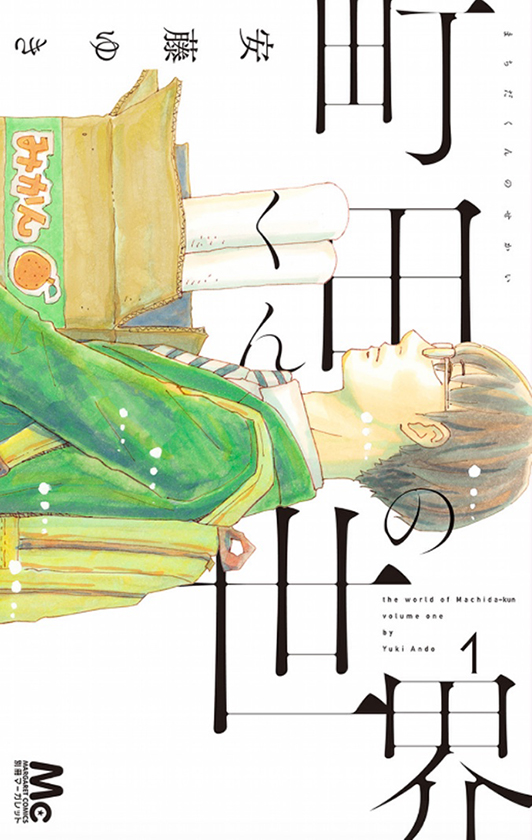
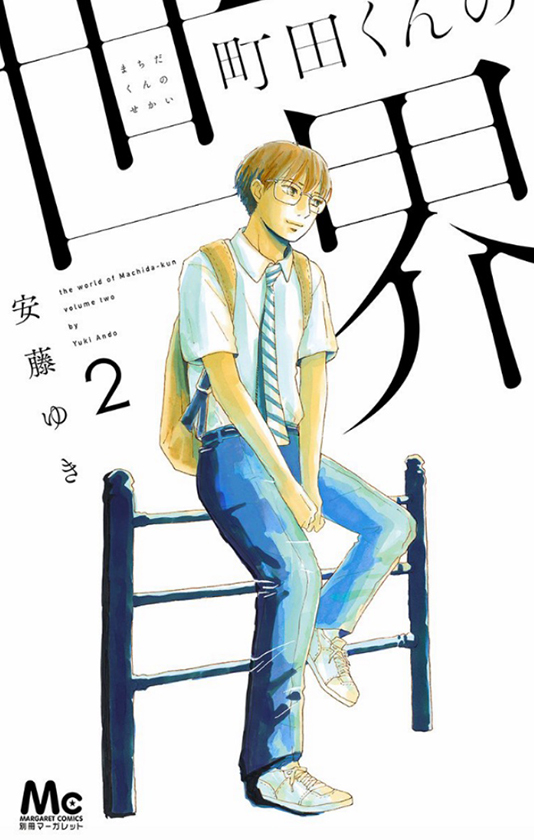
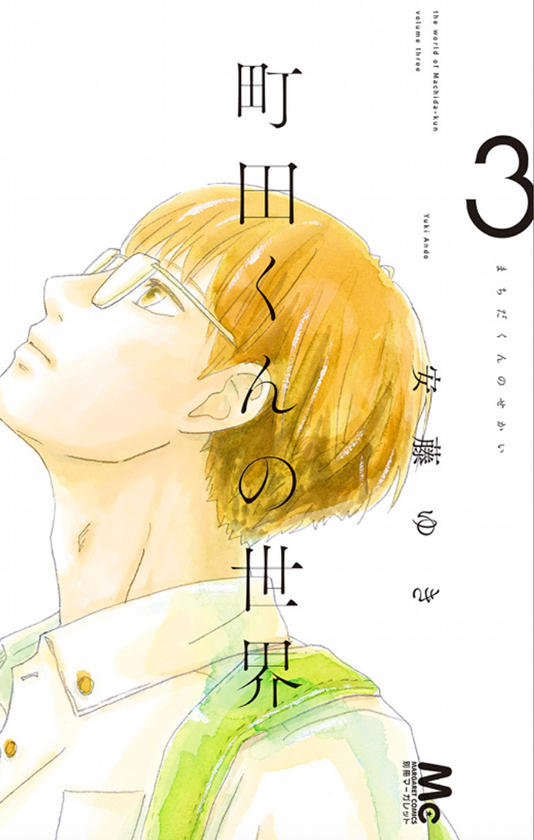
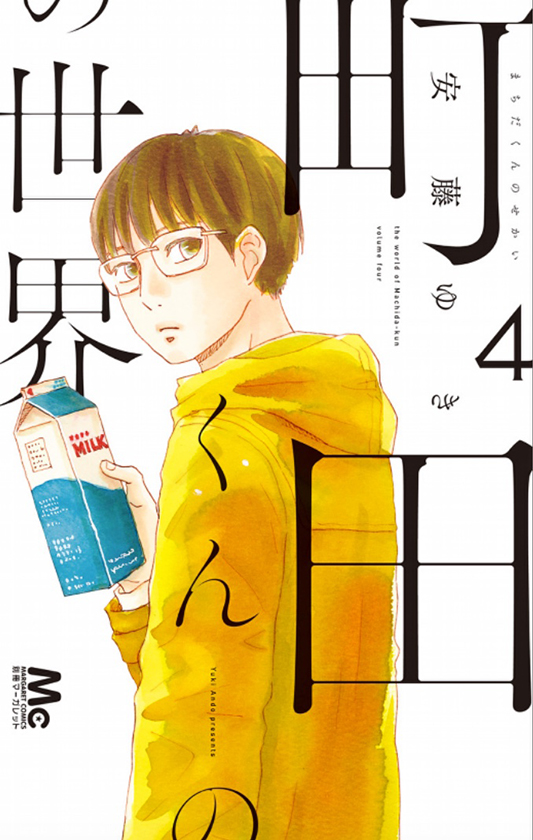
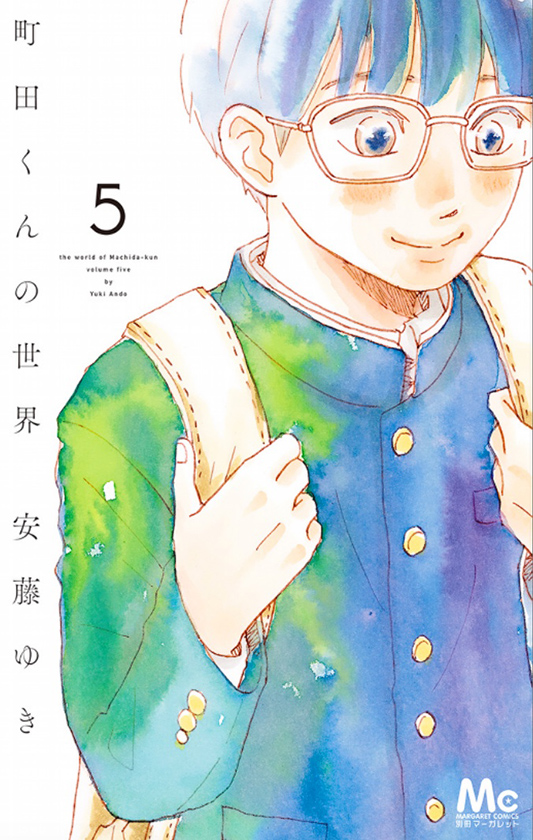
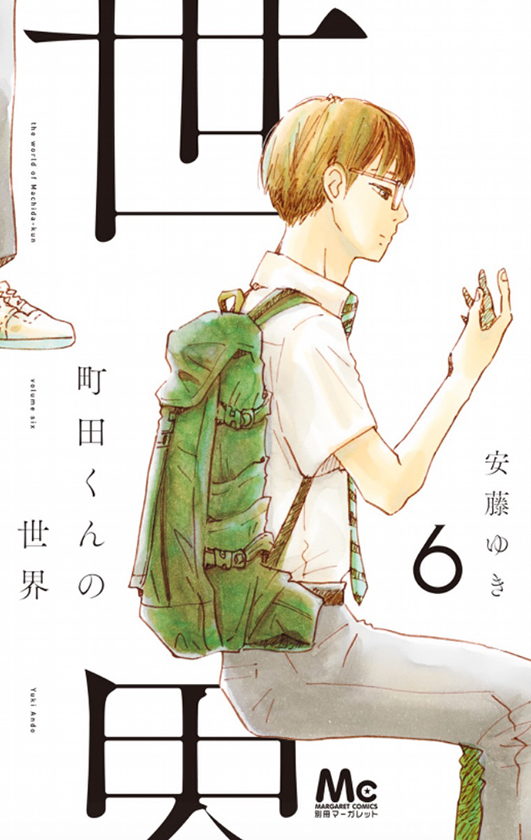
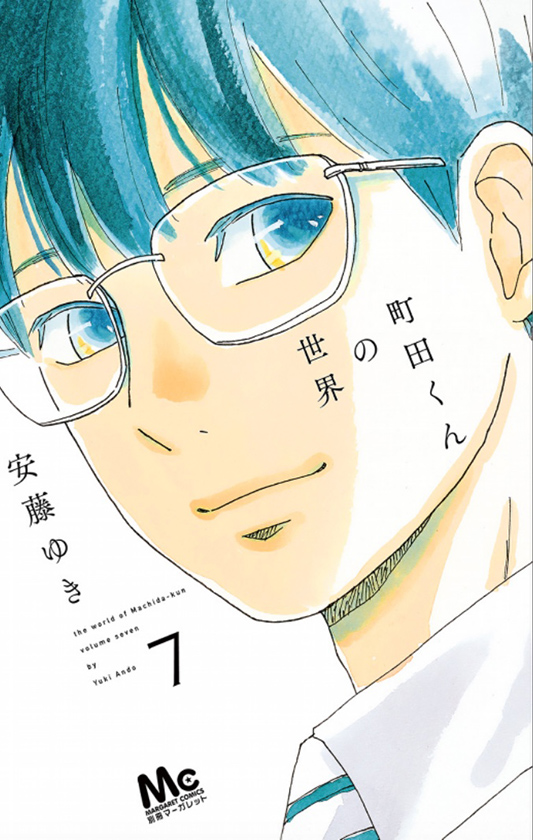
It would be no exaggeration to say that this Betsuma series quietly revolutionized what mainstream shÅjo manga can be. Machida-kun no Sekai‘s male protagonist, the titular Machida Hajime, is perplexing in his selflessness and at the same time in his lack of qualities usually found in male protagonists of shÅjo manga: he is clumsy, a bad student (despite his glasses giving him a scholarly look) and terrible at sports. But also self-sacrificing, completely devoted to the well-being of his – rather big – family, especially his younger siblings, but also his friends and complete strangers. For large parts of the story, the non-dialogue is not inner monologue, as would be typical for shÅjo manga. Instead, a unique observing voice describes in a dry, honest, objective way how Machida sees the world, how he “turns on his antennas” and becomes receptive to the needs of the people around him. These parts read like the voice-over of a documentary, an impression that’s visually supported by thick frames around panels bringing order to the page layouts and the clean art, especially in the architecture and backgrounds. Throughout the manga, the point of view switches, and these descriptions are replaced by the inner monologue of people, strangers and friends, watching Machida, judging him, being surprised or even inspired by him. And then in the later parts, we finally get to look a little more into the inner workings, the thoughts and emotions of Machida as we approach the finale of what is ultimately the love story between Machida-kun and his classmate Inohara-san.
Inohara takes on the part that is usually reserved for the male counterparts of the female protagonists in shÅjo manga. Her rough behaviour is explained as her personal background and her past sufferings are revealed bit by bit. Her healing process is propelled forward by Machida-kun but also through her friendship with Maki. Inohara may come across as ‘cool’ to the reader: you may feel sympathy for her, but she still seems distant. And the same can be said about Machida-kun who is so often observed from the outside. Yet this is exactly what makes the tone of this work so unique and such a pleasant change from the usual shÅjo manga mainstream.
Machida-kun no Sekai stresses the importance of friendships by showing how to build and maintain them, of caring for others across all boundaries of age, gender, sex and social class; of family – siblings, parents, parents’ siblings. And this family is one that is always open to outsiders – older neighbours and, of course, the girl Machida likes. The ending might seem conservative yet it stresses the value of family itself and of this openness toward accepting outsiders. When you take that into consideration, the ending ties everything together beautifully. The light here always shines brighter here than the darkness. Weaknesses can be overcome or accepted, as strength can be found through the help of others. The series, AndÅ’s first longer work, is so calm and mature in its tone and message that it can be recommended to readers who usually prefer manga for older audiences (both josei manga for female readers as well as seinen manga for male readers!). 7 volumes, Margaret Comics, Shueisha. A live-action movie adaptation is opening in Japan in June 2019.




Like Machida-kun no Sekai, Yamakawa Aiji’s Stand Up! started its journey in Shueisha’s monthly shÅjo manga magazine Betsuma, but was later relegated to its sister magazine The Margaret until it reached its finale in spring 2018 after a 3-year hiatus. (You can find more about Yamakawa Aiji and her career in our artist profile.) These magazines are mainly aimed at senior high school-aged girls and manga running in them have to operate within a certain framework. In Betsuma‘s case, the majority of titles features realistic stories while focusing on romance of the ‘pure’ kind (i.e. no sexual depictions of any kind, unlike shÅjo manga magazines from other publishers), friendship and family. The Japanese school year, and more broadly, the 3 years at senior high, set the timeframe within which these stories are usually told. This is no different for both AndÅ’s Machida-kun and Yamakawa’s Stand Up!. But both have in their own ways widened the possibilities of Betsuma‘s tight set of rules.
So it is in this hermetic world of a Japanese senior high school and its daily afterschool activities which last well into the afternoon that Stand Up!‘s two protagonists meet. Utako and Naoyuki are classmates and they couldn’t be more different. Utako always stands out with her current height of 172 centimeters when in fact she’d rather just be invisible to everybody because she is painfully shy and on top of it, feels embarrassed because of her big ears. Naoyuki is very popular and easily makes friends because he can make everybody feel comfortable. But then he starts teasing Utako for her ‘monkey ears’ – and Utako for once feels strangely glad to be noticed. It doesn’t take too long until the two fall in love and become a couple. Which adds to Utako’s stress because with Naoyuki at her side, there’s absolutely no way now she can make herself not be noticed anymore. Through the typical events of the Japanese school year and the couple’s dates during their private time, the two figure out the other’s weaknesses while also growing stronger as individuals and as a couple. These scenes perfectly convey the sense of embarrassment and confusion that’s so typical of that stage in life. Growth here comes gently and without the over-the-top drama that would be used by other artists.
What really stands out in this series is how well the dynamics of the group of friends with the Utako/Naoyuki couple in the center are described. On the side of the female characters, it’s encouraging to read how both Utako and her best friend manage to overcome past toxic relationships and move forward. Naoyuki, on the male side, is an incredibly fascinating character. Like Machida-kun’s family in AndÅ’s manga (see above), Naoyuki has a strong family background. His family owns a small restaurant and he’s been taught to be open, friendly and supportive. Just like with his group of friends which here isn’t an impenetrable entity. It is always open to outsiders, it doesn’t close itself off. The most obvious example for this is a boy named Inui, a hikikomori who no longer comes to school. The classmates decide to visit him and offer him their help. When he rejects them, Naoyuki doesn’t let up as he genuinely cares about those around him – and one day, Inui starts explaining his background to Naoyuki which ultimately leads to his healing. Interestingly enough, unlike the genre conventions, this is not a plot device to make Naoyuki seem like the perfect, knight-like partner to Utako. Naoyuki genuinely treats every person around him with respect and listens to them. His motivation isn’t to make himself more attractive to his girlfriend or to impress her, which is a nice vision of how men can be without losing a bit of their masculinity.
Through caring and nurturing friendships and relationships, these characters create an accepting and understanding environment. The atmosphere here is always warm and positive, never superficial or even hostile. Even the most painful experiences or desperate-seeming situations can be overcome here with hope, healing and forgiveness. If these young people were real and kept this attitude, imagine what empathetic and caring adults they could become, what a great society they could help build…! In this way, through the vehicle of school romance shÅjo manga, Yamakawa tells a humanistic story that’s positive without being too loud, without being violent. This gentleness is reflected in the art, in the warm palette of beiges and browns of the hardly there watercolour illustrations which seem almost like faded but fond memories.
It is really impressive that despite her struggles with her work as a manga artist, Yamakawa Aiji finished Stand Up! by picking up the pre-hiatus strands perfectly and seamlessly. The art of the newer material is just as fluid and full of motion and life-like gestures as it used to be and convincingly concludes the story. As airy and light Yamakawa’s art is, as complex is the psychological fleshing out of her characters. Like I wrote in Yamakawa’s artist profile and in the post concerning her 2018 comeback, I’m still convinced she is an extremely gifted talent, even if her professional career is riddled with periods of absence & hiatus. Now that there seem to be dark clouds on the horizon again (her latest series 2.43 Seiin KÅkÅ Danshi BarÄ“-bu in collaboration with Kabei Yukako in Cocohana is on indefinite hiatus again), I wish to see more from her in 2019 and hope that circumstances will allow her to release her work again soon! 4 volumes, Margaret Comics, Shueisha.

 If you’re a dedicated follower of a manga artist, nothing feels more troubling than when their current series goes on hiatus, especially for health reasons. From a completely selfish perspective, it might mean you’ll never be able to read the end of that series. But of course it also makes you worry for the mangaka, the person who’s been working hard to deliver new chapters of their work. Accidents, illnesses, the inability to continue working due to high levels of stress, they aren’t that rare when it comes to interfering with a manga arist’s life and bringing their career to a halt. To the avid shÅjo/josei-oriented manga reader, artists like Okazaki KyÅko or Yazawa Ai might come to mind. Another manga artist that disappeared with an unfinished series was Yamakawa Aiji, someone we’re very fond of here at coinlockerbaby.org.
If you’re a dedicated follower of a manga artist, nothing feels more troubling than when their current series goes on hiatus, especially for health reasons. From a completely selfish perspective, it might mean you’ll never be able to read the end of that series. But of course it also makes you worry for the mangaka, the person who’s been working hard to deliver new chapters of their work. Accidents, illnesses, the inability to continue working due to high levels of stress, they aren’t that rare when it comes to interfering with a manga arist’s life and bringing their career to a halt. To the avid shÅjo/josei-oriented manga reader, artists like Okazaki KyÅko or Yazawa Ai might come to mind. Another manga artist that disappeared with an unfinished series was Yamakawa Aiji, someone we’re very fond of here at coinlockerbaby.org.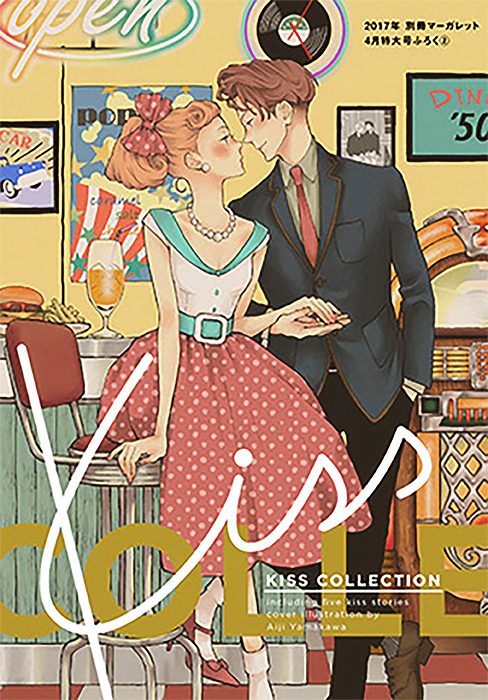 In our
In our  It took until late 2017 for good news to be announced: Stand Up! would be back in the April issue of The Margaret which went on sale on February 24th, 2018. Also gracing the magazine’s cover, Yamakawa’s longest-running series so far was back after 3 years with a 100-page installment and the announcement that it would end in the next issue (June 2018) of The Margaret. This means Stand Up! will now end with its 4th comic volume – an end not rushed but planned in advance by the artist – to be published on July 25, 2018.
It took until late 2017 for good news to be announced: Stand Up! would be back in the April issue of The Margaret which went on sale on February 24th, 2018. Also gracing the magazine’s cover, Yamakawa’s longest-running series so far was back after 3 years with a 100-page installment and the announcement that it would end in the next issue (June 2018) of The Margaret. This means Stand Up! will now end with its 4th comic volume – an end not rushed but planned in advance by the artist – to be published on July 25, 2018.



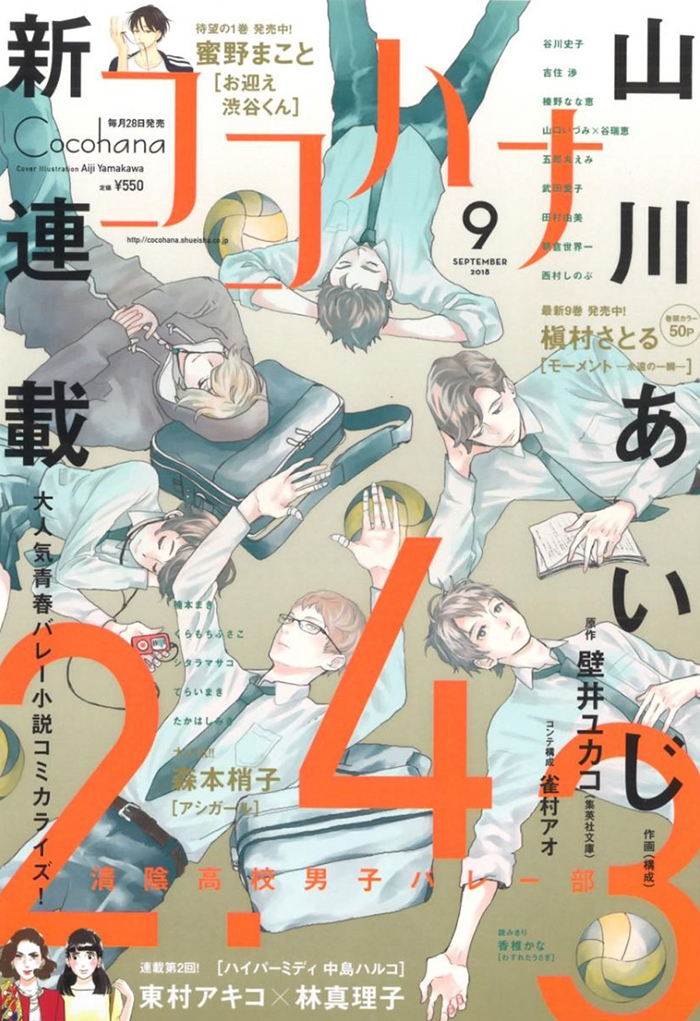 More good news for people following Yamakawa Aiji’s career came at the end of June! Her new series will debut in Shueisha’s monthly josei-oriented manga magazine Cocohana, with its September issue on sale July 27. Even better yet, she’s also getting to contribute the magazine’s cover artwork (see left). The series itself, titled 2.43 Seiin KÅkÅ Danshi BarÄ“-bu (2.43 – Seiin High School Boys’ Volleyball Club), isn’t all that new, though. It’s the manga adaptation of a young entertainment novel series about the rise of a boys’ volleyball team in a small provincial high school, created by Kabei Yukako and illustrated by none other than Yamakawa Aiji. Its first story arc (appropriately called ‘season’) was first published in 2013, the second followed in 2015 and the third season has been running since August 2017. (See below for the covers of the novels published so far.)
More good news for people following Yamakawa Aiji’s career came at the end of June! Her new series will debut in Shueisha’s monthly josei-oriented manga magazine Cocohana, with its September issue on sale July 27. Even better yet, she’s also getting to contribute the magazine’s cover artwork (see left). The series itself, titled 2.43 Seiin KÅkÅ Danshi BarÄ“-bu (2.43 – Seiin High School Boys’ Volleyball Club), isn’t all that new, though. It’s the manga adaptation of a young entertainment novel series about the rise of a boys’ volleyball team in a small provincial high school, created by Kabei Yukako and illustrated by none other than Yamakawa Aiji. Its first story arc (appropriately called ‘season’) was first published in 2013, the second followed in 2015 and the third season has been running since August 2017. (See below for the covers of the novels published so far.)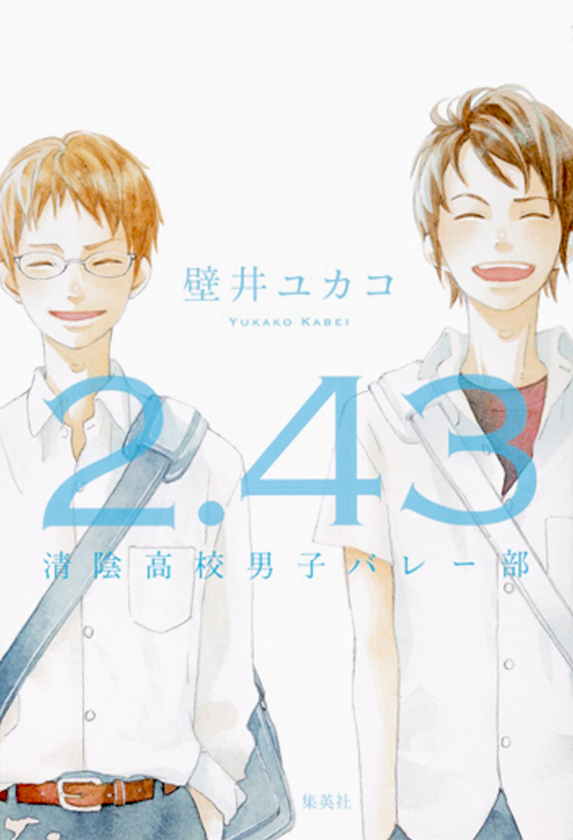
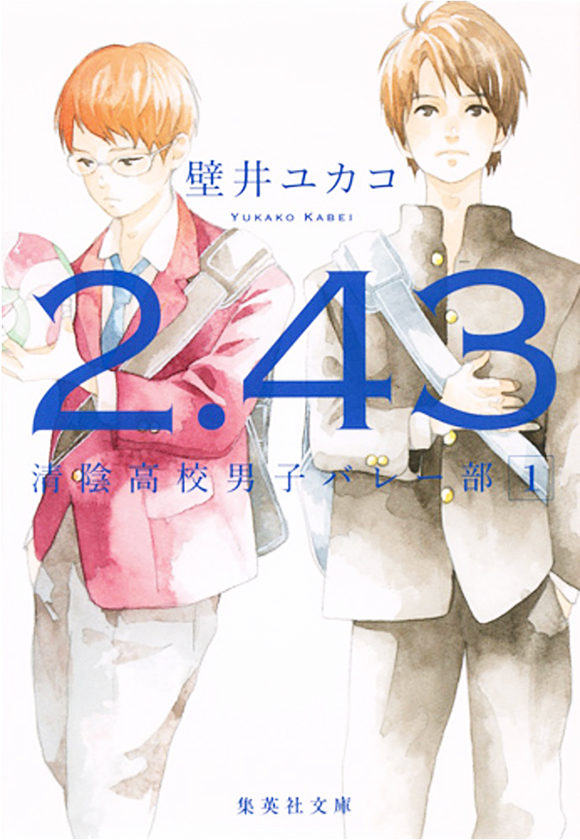
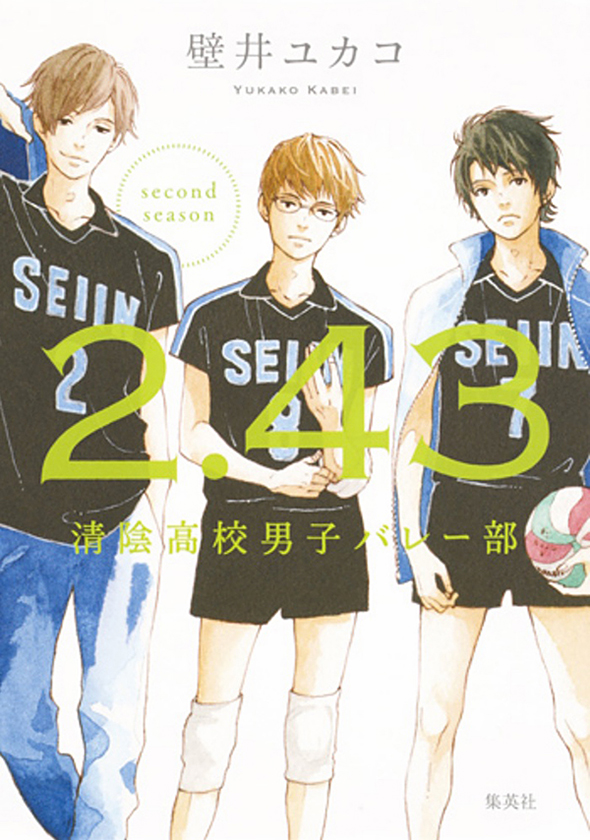
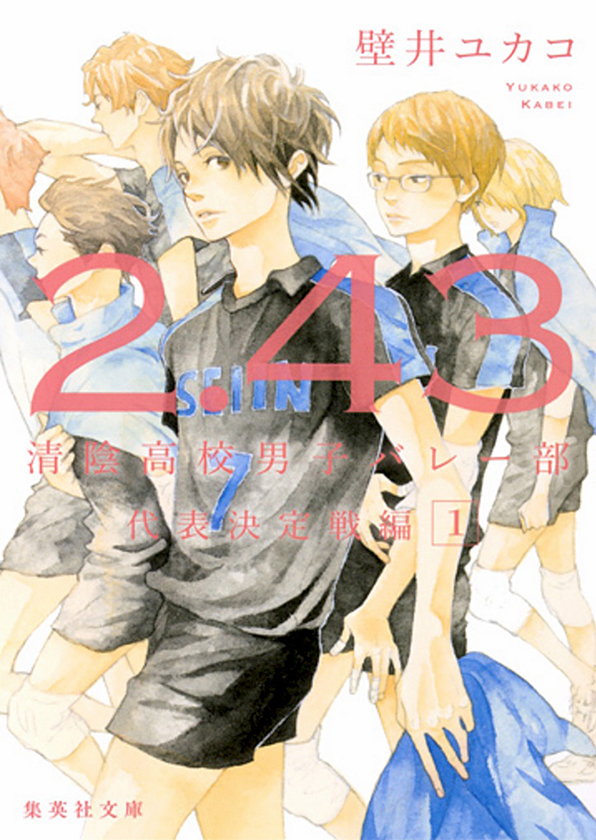
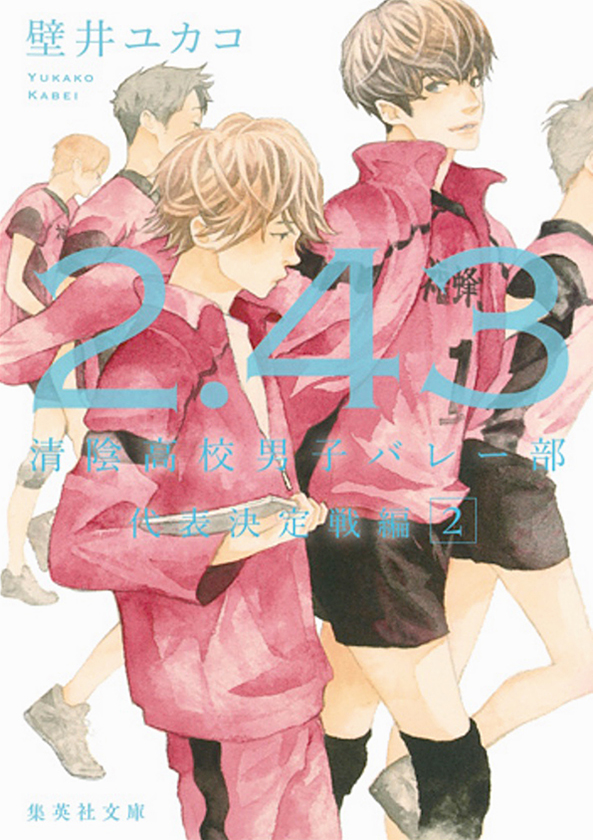
 From mid-2015 to late 2016, a strange candy-coloured jewel sparkled brightly in Shueisha’s Gekkan YOU, a monthly josei manga magazine which has a target demographic from youngish female office workers to women in their 50s who all have been reading shoujo manga for a long time, and which usually offers a line-up of mostly romance, comedy and slice of life josei manga by shoujo manga veterans. Yet sometimes it is in the most unexpected places you can find the most unusual, charming little gems, in this case a short series called Kokage-kun wa Majo (subtitled Kokage-kun Bewitched, but more literally translated Kokage-kun is a Witch), published separately in 3 comic volumes.
From mid-2015 to late 2016, a strange candy-coloured jewel sparkled brightly in Shueisha’s Gekkan YOU, a monthly josei manga magazine which has a target demographic from youngish female office workers to women in their 50s who all have been reading shoujo manga for a long time, and which usually offers a line-up of mostly romance, comedy and slice of life josei manga by shoujo manga veterans. Yet sometimes it is in the most unexpected places you can find the most unusual, charming little gems, in this case a short series called Kokage-kun wa Majo (subtitled Kokage-kun Bewitched, but more literally translated Kokage-kun is a Witch), published separately in 3 comic volumes. Its young artist, Komori YÅko, is a very recent graduate of Bunsei University of Art and neither a former Betsuma author now graduated to YOU nor a veteran like Hagio Moto, who are all more typical for the latter magazine’s roster. But Komori’s unique art style and inventive story-telling definitely deserve a closer look if you’re interested in exciting new talents. She only has two previous 2-volume series under her belt, one astronomically themed, the other one taking place in a maritime setting, which were also serialized in YOU. In these two works, she has already been able to impress readers with her quiet but entrancing stories and her stunning yet clean art relying heavily on natural motifs. Here, in Kokage-kun wa Majo it’s the plants-growing-out-of-cute-boys-and-girls, slightly pagan aesthetics so popular among professional and amateur artists right now which are combined with pastel secondary colors, playful gothic lolita accessories and fairy tale elements in a suburban and later on more fantastic setting providing a backdrop for a surprisingly dark love story.
Its young artist, Komori YÅko, is a very recent graduate of Bunsei University of Art and neither a former Betsuma author now graduated to YOU nor a veteran like Hagio Moto, who are all more typical for the latter magazine’s roster. But Komori’s unique art style and inventive story-telling definitely deserve a closer look if you’re interested in exciting new talents. She only has two previous 2-volume series under her belt, one astronomically themed, the other one taking place in a maritime setting, which were also serialized in YOU. In these two works, she has already been able to impress readers with her quiet but entrancing stories and her stunning yet clean art relying heavily on natural motifs. Here, in Kokage-kun wa Majo it’s the plants-growing-out-of-cute-boys-and-girls, slightly pagan aesthetics so popular among professional and amateur artists right now which are combined with pastel secondary colors, playful gothic lolita accessories and fairy tale elements in a suburban and later on more fantastic setting providing a backdrop for a surprisingly dark love story.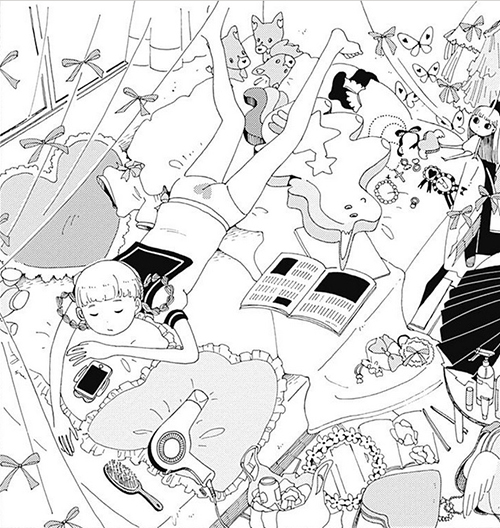 Yumeko, our female protagonist, is a cute but lazy and self-indulgent girl who likes rolling around on the floor of her room in just a pair of panties and her school uniform top. Together with her mother, she lives in a decrepit community apartment building, a fact she’s been trying to hide from the girls in her class – and often from herself as she dreams herself away, imagining herself to be a princess swimming in cute clothes, candy and cakes. (We’re back to an old danchi as the childhood home of a shoujo manga heroine here; see Yamakawa Aiji’s previously reviewed
Yumeko, our female protagonist, is a cute but lazy and self-indulgent girl who likes rolling around on the floor of her room in just a pair of panties and her school uniform top. Together with her mother, she lives in a decrepit community apartment building, a fact she’s been trying to hide from the girls in her class – and often from herself as she dreams herself away, imagining herself to be a princess swimming in cute clothes, candy and cakes. (We’re back to an old danchi as the childhood home of a shoujo manga heroine here; see Yamakawa Aiji’s previously reviewed 
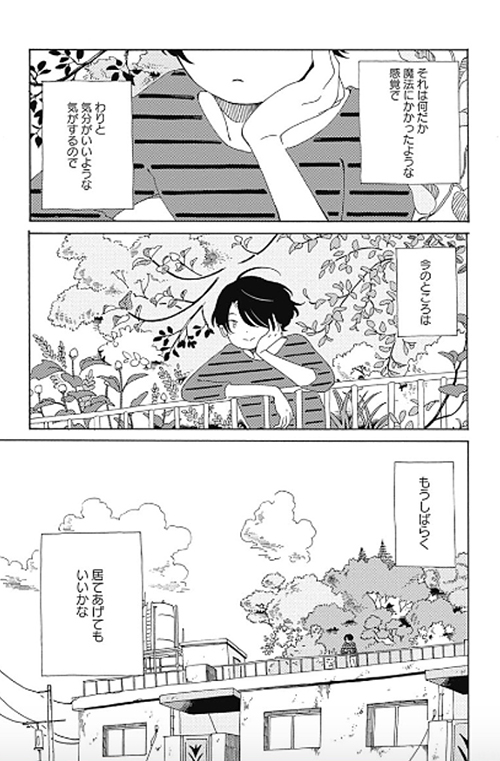
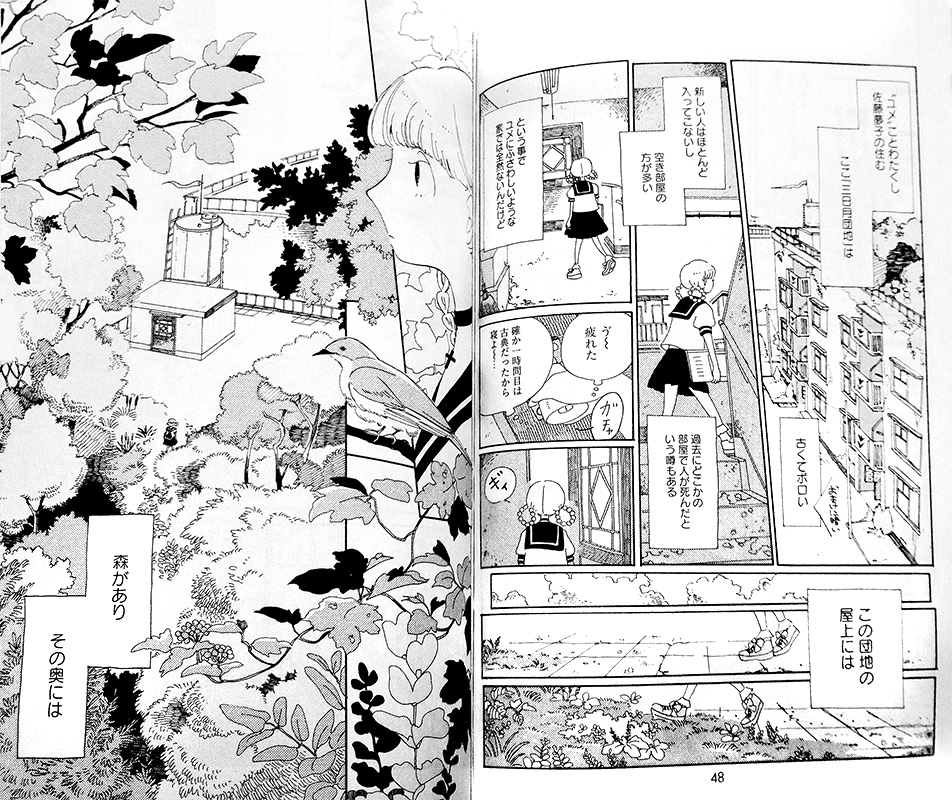
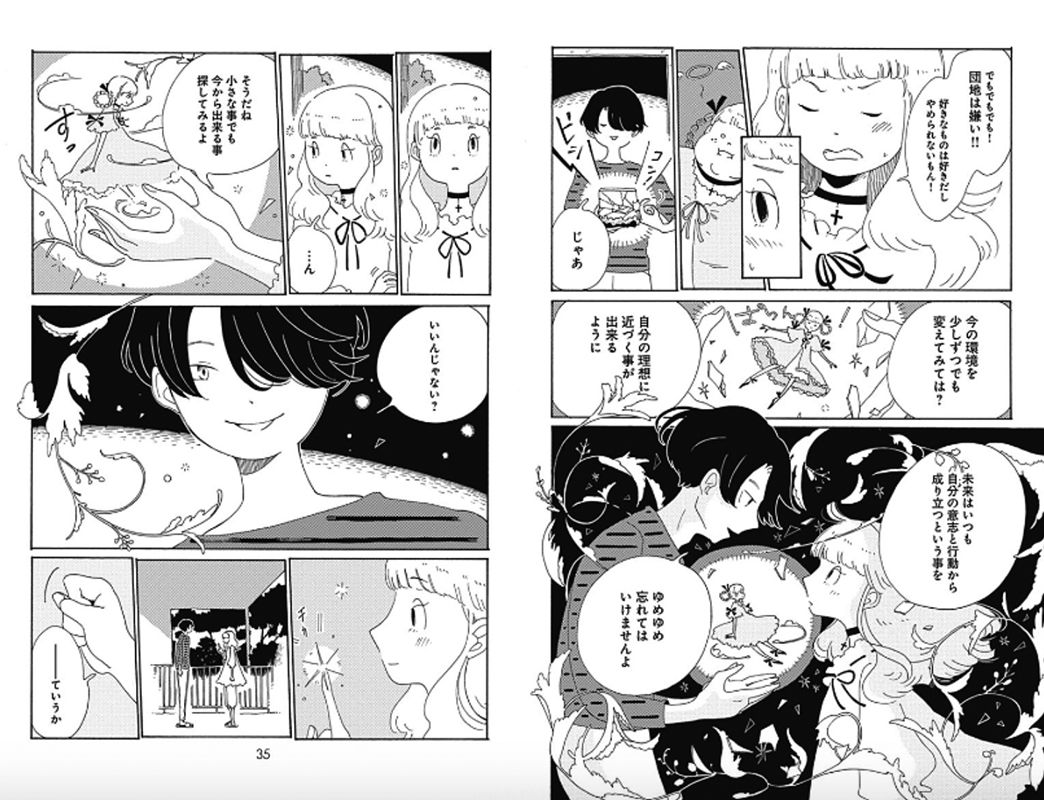
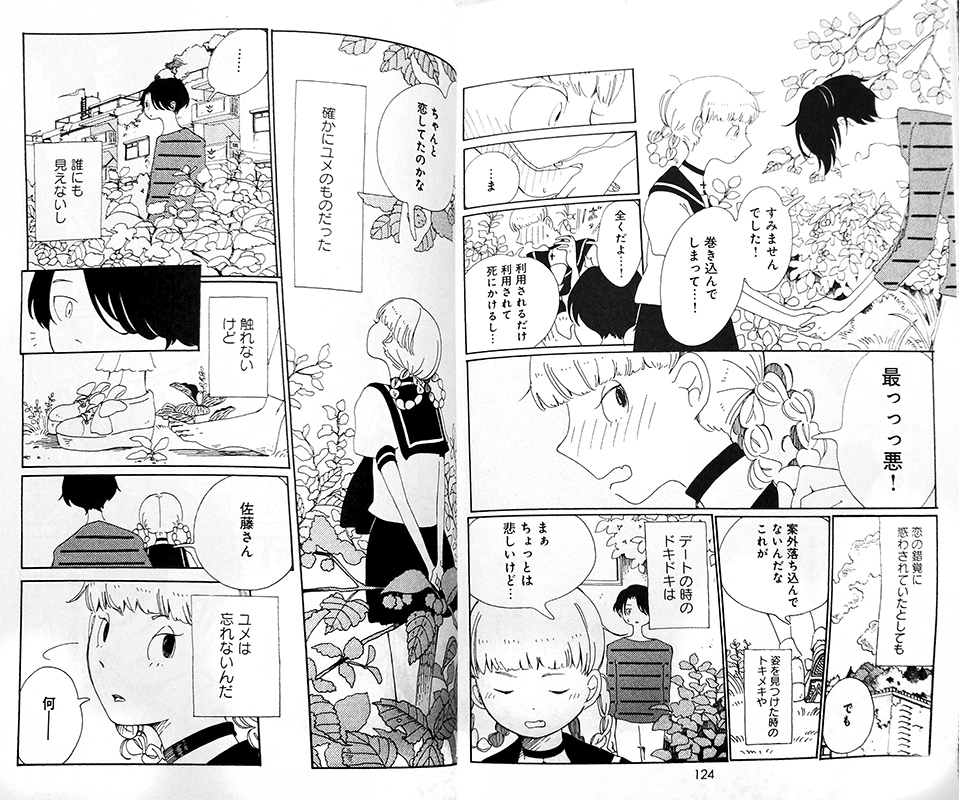
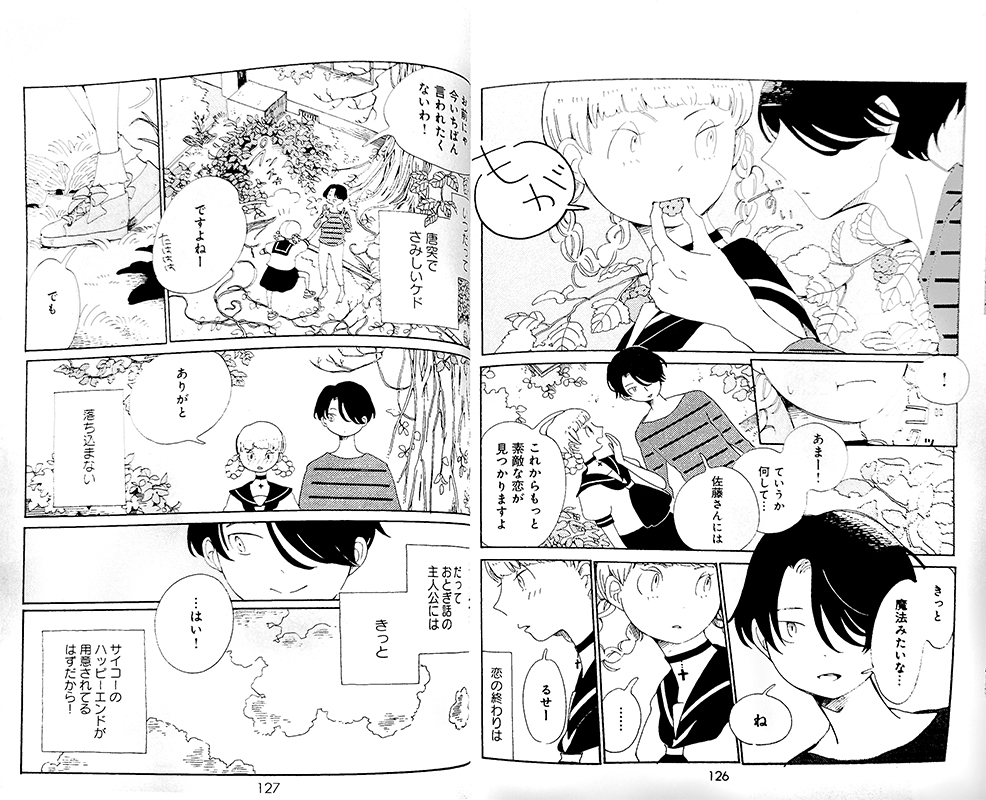
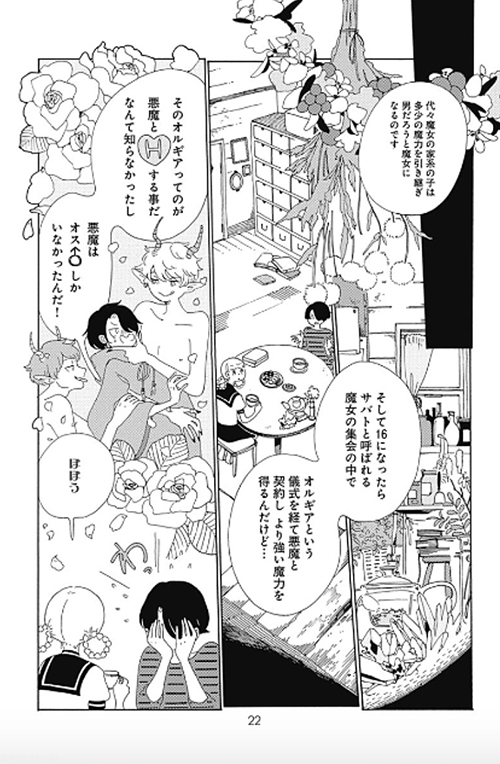 Kokage-kun was supposed to take part in an “orgia†with a demon (akuma) to gain his full magical powers. He didn’t want to, though – for hidden reasons closely connected to Yumeko. The demon, however, never accepted Kokage-kun’s rejection and can’t let go of his desire for the witch boy and his right to an orgy with him. (And yes, that orgy is exactly what it sounds like ;) His plan is to get closer to Kokage-kun by using Yumeko who is flattered by the sudden attention of the demon in the disguise of a rather good-looking schoolboy. Of course, Yumeko is doomed to get hurt once she finds out the demon’s true intentions and is shocked when she hears about that orgia business.
Kokage-kun was supposed to take part in an “orgia†with a demon (akuma) to gain his full magical powers. He didn’t want to, though – for hidden reasons closely connected to Yumeko. The demon, however, never accepted Kokage-kun’s rejection and can’t let go of his desire for the witch boy and his right to an orgy with him. (And yes, that orgy is exactly what it sounds like ;) His plan is to get closer to Kokage-kun by using Yumeko who is flattered by the sudden attention of the demon in the disguise of a rather good-looking schoolboy. Of course, Yumeko is doomed to get hurt once she finds out the demon’s true intentions and is shocked when she hears about that orgia business.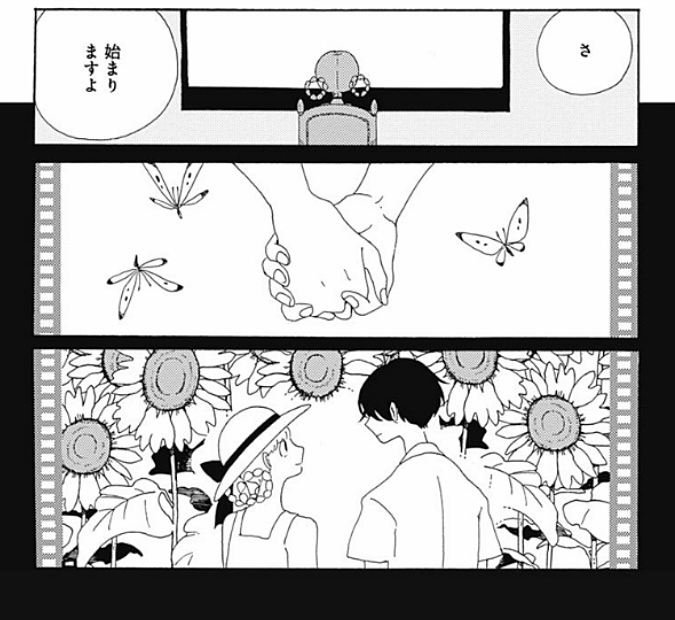 Things get even more complicated when Yumeko realizes that her own feelings for the witch boy are slowly changing when her best friend Nanao falls in love with him. But there is a mysterious strong bond between Yumeko and Kokage: they seem to have a shared past Yumeko doesn’t remember, the proof being a photograph she finds of her and him smiling happily in a field of sunflowers… This is just the beginning of Yumeko’s and Kokage-kun’s dangerous journey to the bottom of darkness which is lightened up by hope, friendship and wonders, more witches, demons and a puppet master, a journey to recover Yumeko’s lost memories of a forgotten love – and to overcome death.
Things get even more complicated when Yumeko realizes that her own feelings for the witch boy are slowly changing when her best friend Nanao falls in love with him. But there is a mysterious strong bond between Yumeko and Kokage: they seem to have a shared past Yumeko doesn’t remember, the proof being a photograph she finds of her and him smiling happily in a field of sunflowers… This is just the beginning of Yumeko’s and Kokage-kun’s dangerous journey to the bottom of darkness which is lightened up by hope, friendship and wonders, more witches, demons and a puppet master, a journey to recover Yumeko’s lost memories of a forgotten love – and to overcome death. Like mentioned in the beginning, Komori YÅko’s artwork is absolutely delightful! From the beautiful color illustrations for the book covers, sweetly pastel-hued like Yumeko’s beloved candy, to the retro but sparkle-free character designs, which convey emotions expertly through lively facial expressions, to the atmospheric settings – there’s just so much that pleases the eye without ever being overwhelming. The page designs throughout are mostly clean, with the action often put into tidy panels, but also feature pretty details and natural ornaments, like insects, flowers, or even leaves growing out of bodies. But the pages never appear overwrought or overloaded, just as the story is not convoluted but – despite its growing complexity – easy to follow throughout the three volumes. And what is important to stress is that the art of a wildly growing nature is not just a visual gimmick here, as the life force of nature is crucial to the bitter but ultimately sweet story. Komori is also a master of creating memorable scenes just by putting her whimsical characters, fully fleshed out with their own weaknesses and quirky habits, into charming sceneries and settings: the run-down yet retro-cute community housing complex, a haunted forest, a day at the beach that envelopes the reader in its atmosphere so successfully you’ll find yourself able to smell the salty air and hear the cries of the seagulls!
Like mentioned in the beginning, Komori YÅko’s artwork is absolutely delightful! From the beautiful color illustrations for the book covers, sweetly pastel-hued like Yumeko’s beloved candy, to the retro but sparkle-free character designs, which convey emotions expertly through lively facial expressions, to the atmospheric settings – there’s just so much that pleases the eye without ever being overwhelming. The page designs throughout are mostly clean, with the action often put into tidy panels, but also feature pretty details and natural ornaments, like insects, flowers, or even leaves growing out of bodies. But the pages never appear overwrought or overloaded, just as the story is not convoluted but – despite its growing complexity – easy to follow throughout the three volumes. And what is important to stress is that the art of a wildly growing nature is not just a visual gimmick here, as the life force of nature is crucial to the bitter but ultimately sweet story. Komori is also a master of creating memorable scenes just by putting her whimsical characters, fully fleshed out with their own weaknesses and quirky habits, into charming sceneries and settings: the run-down yet retro-cute community housing complex, a haunted forest, a day at the beach that envelopes the reader in its atmosphere so successfully you’ll find yourself able to smell the salty air and hear the cries of the seagulls!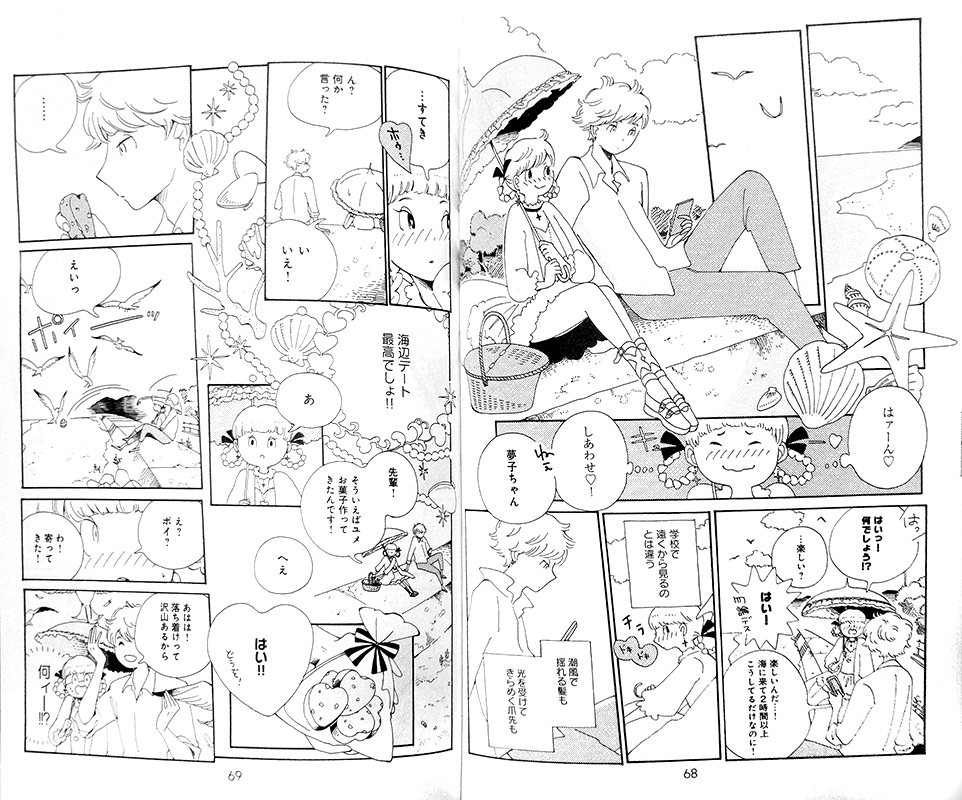
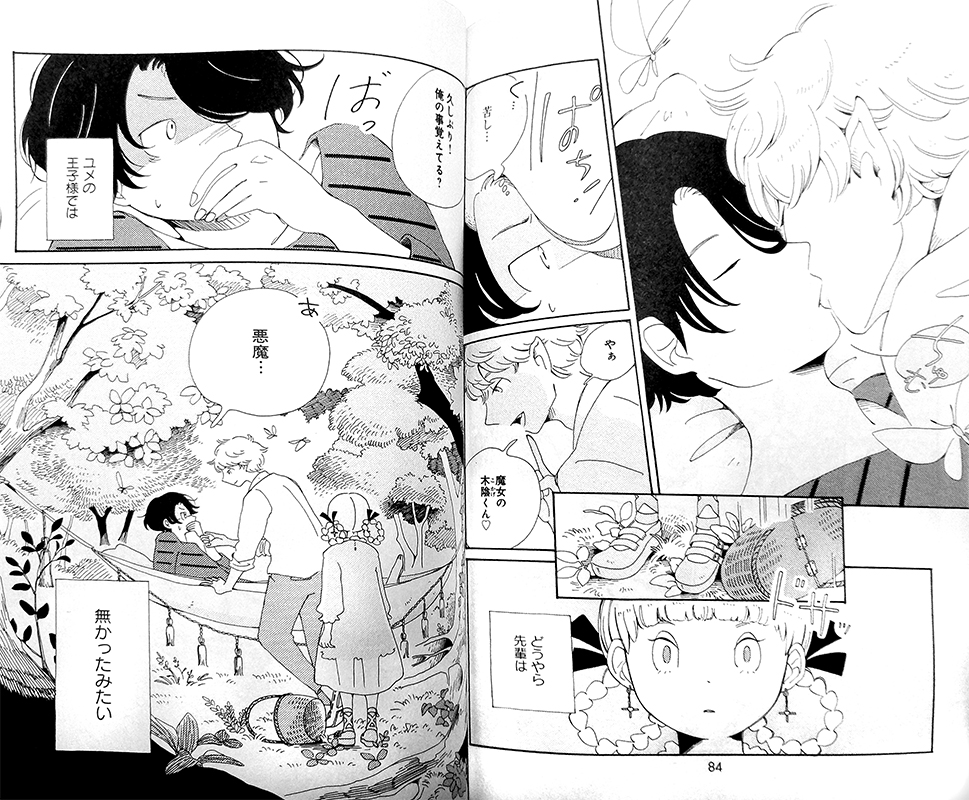
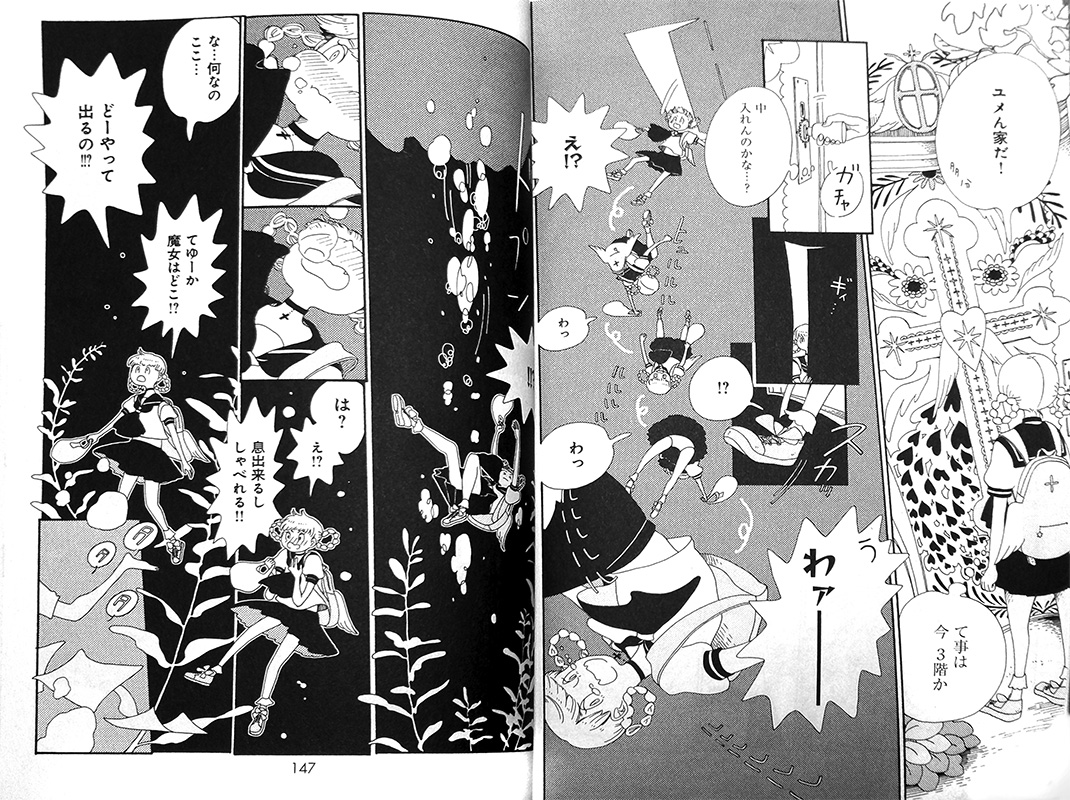
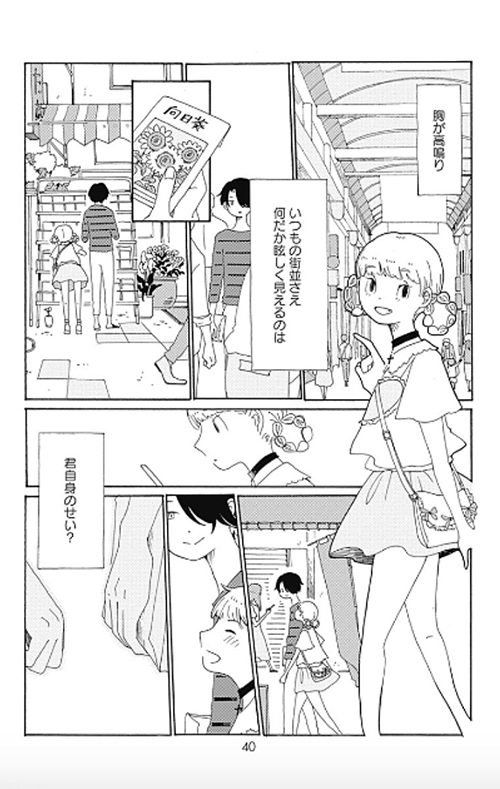 Komori YÅko is not just a wizard of ink and colours: her series is brimming with small inventive ideas which are delivered both through the art and the story itself. Her talent for plotting and story-telling is just as outstanding as her art, as she presents us with a narrative full of twists and turns. Our starting point is witnessing the antics of our lazy heroine, her hilarious lack of self-discipline and her little quarrels with the witch boy, the tone being light and fun with a slight hint of melancholia. As the story unravels it turns surprisingly complex and deeply emotional, combining elements of comedy, fantasy, romance, adventure and even boys’ love. It sometimes even ventures into the surreal which again provides the reader with some unusual art to go along with it.
Komori YÅko is not just a wizard of ink and colours: her series is brimming with small inventive ideas which are delivered both through the art and the story itself. Her talent for plotting and story-telling is just as outstanding as her art, as she presents us with a narrative full of twists and turns. Our starting point is witnessing the antics of our lazy heroine, her hilarious lack of self-discipline and her little quarrels with the witch boy, the tone being light and fun with a slight hint of melancholia. As the story unravels it turns surprisingly complex and deeply emotional, combining elements of comedy, fantasy, romance, adventure and even boys’ love. It sometimes even ventures into the surreal which again provides the reader with some unusual art to go along with it.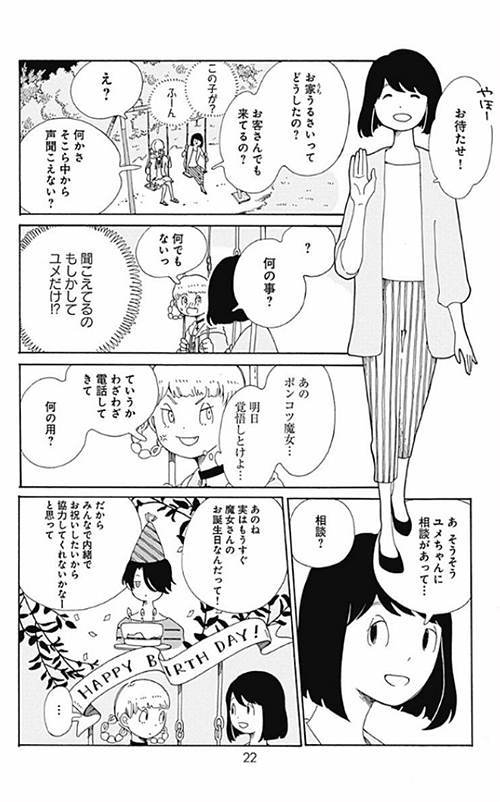 The cast is growing too as Yumeko and Kokage later on are joined by more and more magical companions. And it’s the deepening bonds with Yumeko’s friend from school, Nanao, and another witch girl called Moe that are really nice to watch, as this manga is not just a fantasy romance manga but also depicts friendships among girls in a realistic, multi-layered way. However, the heart of the manga remains Yumeko’s and Kokage-kun’s dangerous journey, as the question of whether the two will be able to save their future together is what will keep readers devouring the pages, desperately hoping for a happy end…
The cast is growing too as Yumeko and Kokage later on are joined by more and more magical companions. And it’s the deepening bonds with Yumeko’s friend from school, Nanao, and another witch girl called Moe that are really nice to watch, as this manga is not just a fantasy romance manga but also depicts friendships among girls in a realistic, multi-layered way. However, the heart of the manga remains Yumeko’s and Kokage-kun’s dangerous journey, as the question of whether the two will be able to save their future together is what will keep readers devouring the pages, desperately hoping for a happy end…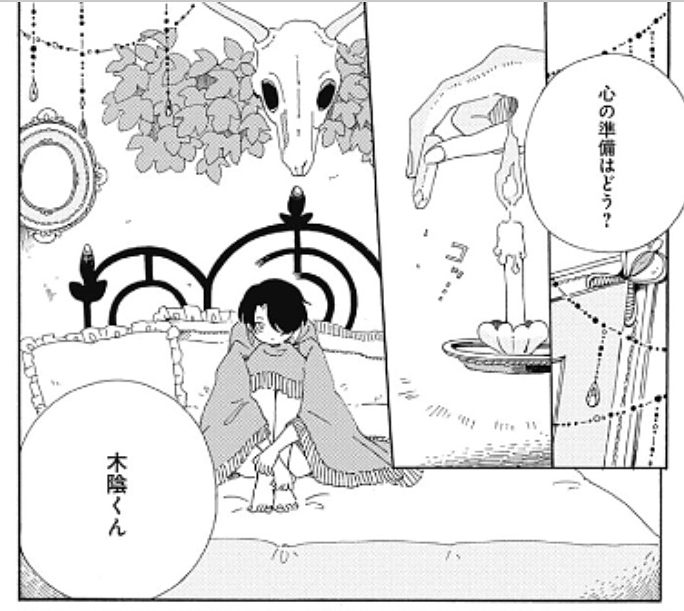 It’s been a while since Kokage-kun wa Majo ended its run and there has been no word on a new work by Komori YÅko, neither short nor long. But now that the artist has finished her art school education, we have to keep our fingers crossed she’ll be able to continue her career as a manga artist and find a lot of support in the future as both her quirky art and story-telling abilities truly stand out in the often rather homogenous sea of mainstream shoujo/josei manga.
It’s been a while since Kokage-kun wa Majo ended its run and there has been no word on a new work by Komori YÅko, neither short nor long. But now that the artist has finished her art school education, we have to keep our fingers crossed she’ll be able to continue her career as a manga artist and find a lot of support in the future as both her quirky art and story-telling abilities truly stand out in the often rather homogenous sea of mainstream shoujo/josei manga.